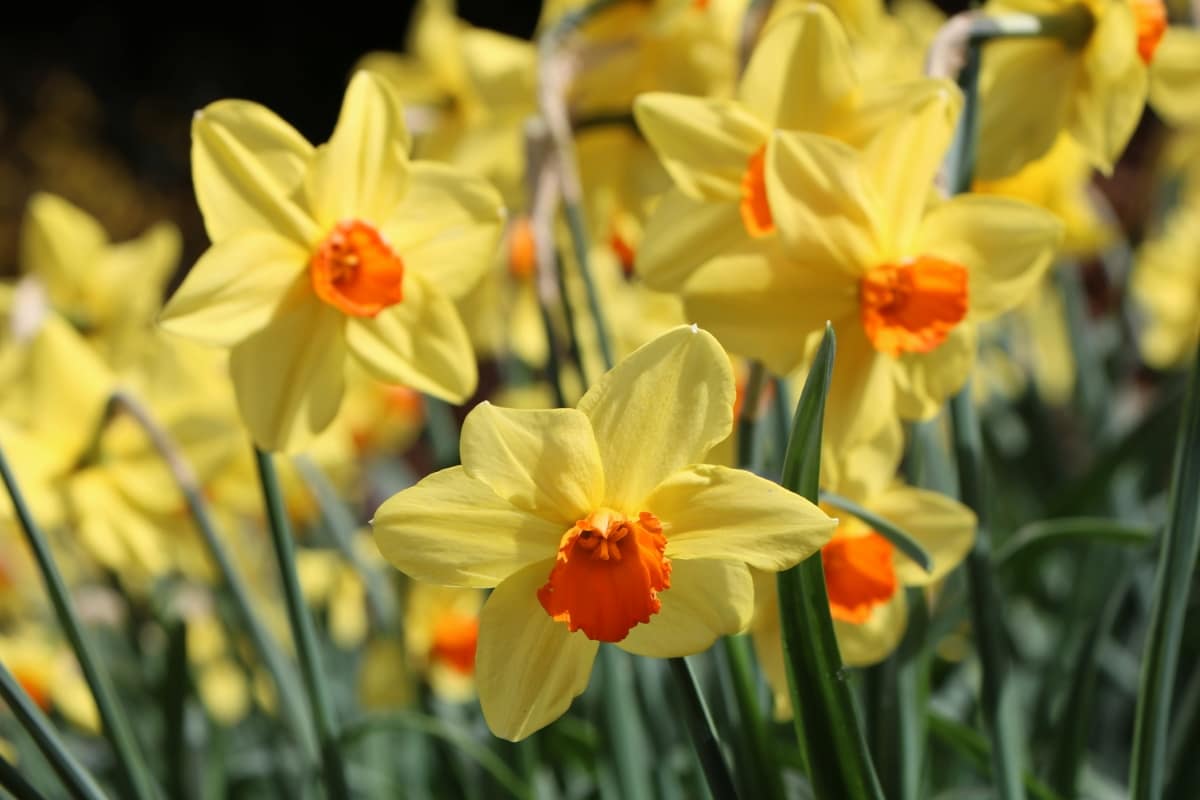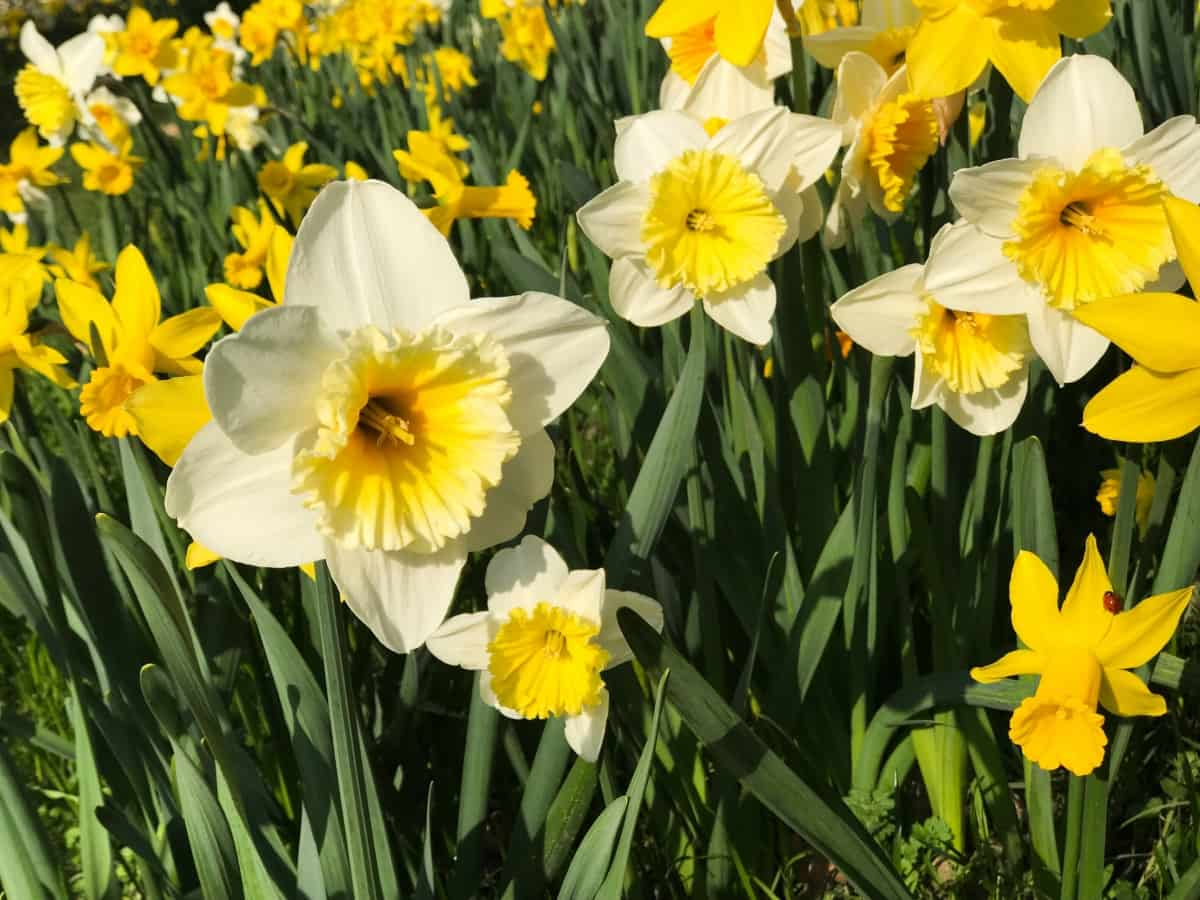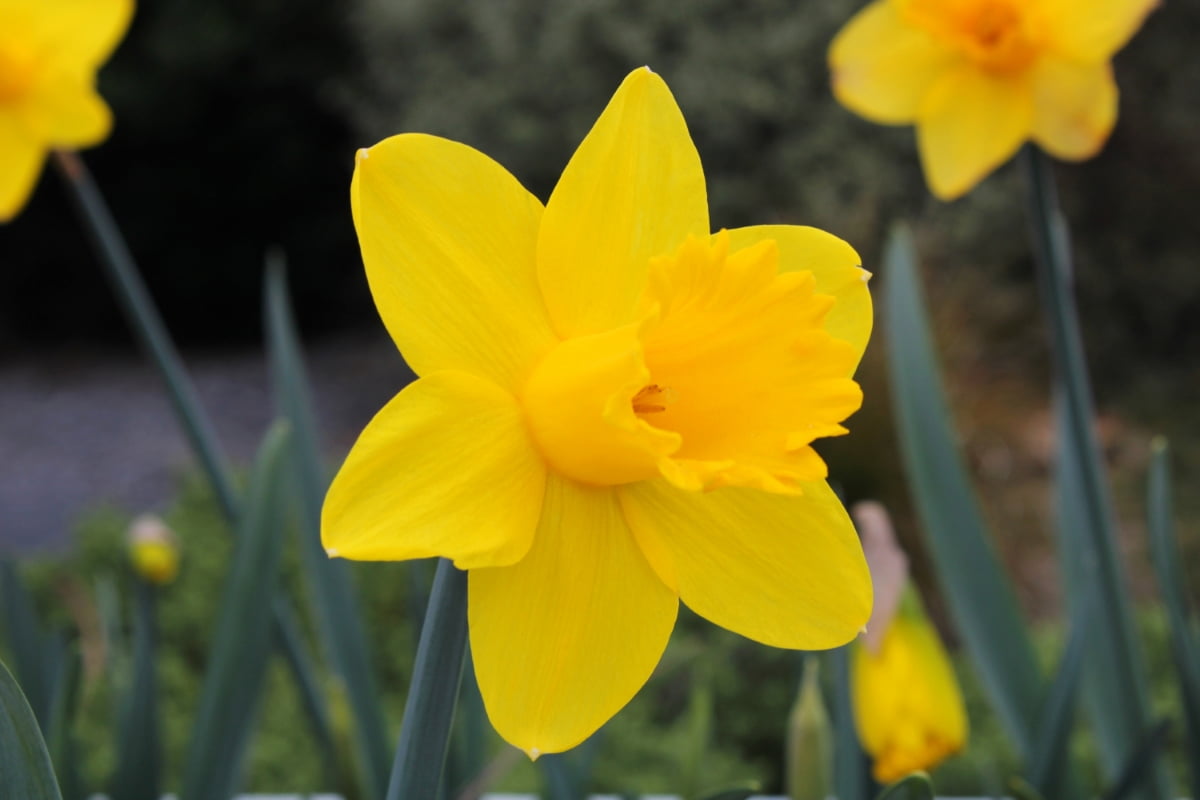Daffodils are among the most popular spring-blooming flowers, with their cheerful appearance and delightful fragrance. To ensure a thriving display of these beautiful blooms, it is essential to provide them with the right nutrients. Here we learn the best fertilizers for daffodils, when and how to apply them, and explore the benefits of using natural fertilizers and bone meal.

Best Fertilizer for Daffodil
The Importance of Fertilizing Daffodils
Like all plants, daffodils require essential nutrients to grow and thrive. Potassium (K), nitrogen (N), and phosphorus (P) are examples of these nutrients. By providing daffodils with the correct balance of these nutrients, gardeners can ensure that their daffodils produce healthy foliage and vibrant blooms. Fertilizing daffodils not only encourages more vigorous growth but also helps the plants to withstand environmental stressors, such as pests and diseases.
The Best Time of Year to Fertilize Daffodils
The best time of year to fertilize daffodils is in the fall before the bulbs start developing their roots. This allows the nutrients to become readily available in the soil, providing the daffodils with the necessary nourishment during their active growth period in the spring. Applying fertilizer in the fall also ensures that the nutrients are in place for the bulbs to store energy for the following year’s growth.
Natural Fertilizers for Daffodils
Natural fertilizers are an excellent choice for daffodils, as they provide a slow-release of nutrients that the plants readily absorb. Some of the best natural daffodil fertilizers include compost, well-rotted manure, and leaf mold. These organic materials supply essential NPK nutrients and improve the soil’s overall structure and fertility.
Bone Meal and its Benefits for Daffodils
Bone meal is a popular organic fertilizer that is particularly beneficial for daffodils. Made from ground animal bones, bone meal is high in phosphorus, an essential nutrient for root development and flower production. By incorporating bone meal into the soil at planting time, gardeners can provide daffodils with a slow-release source of phosphorus that will support healthy growth throughout the season.
Understanding NPK Ratios for Daffodil Fertilizers
NPK ratios indicate a fertilizer’s relative amounts of nitrogen, phosphorus, and potassium. Daffodils generally require a balanced NPK ratio, with equal parts of each nutrient. For example, a fertilizer with an NPK ratio of 5-5-5 provides equal amounts of nitrogen, phosphorus, and potassium.
How to Apply Fertilizer to Daffodils
Add compost, well-rotted manure, or leaf mold to the soil in the fall. This will improve soil fertility and structure, providing a healthy environment for daffodil growth. At planting time, mix a balanced fertilizer (such as a 5-5-5 NPK ratio) with the soil in the planting hole, following the recommended application rate on the fertilizer package.
In case you missed it: The Best Fertilizer for Chrysanthemums: When and How to Apply

Alternatively, you can apply bone meal, ensuring it is mixed well with the soil to avoid direct contact with the bulbs. Once the daffodils have finished blooming in the spring, apply a second round of fertilizer. This will replenish the nutrients the daffodils have used during their active growth period and help the bulbs store energy for the following year’s growth.
Special Considerations for Fertilizing Daffodils
Avoid over-fertilizing. While it might be tempting to apply more fertilizer to produce larger or more abundant blooms, over-fertilizing can harm the plants. Excessive fertilizer can lead to nutrient imbalances in the soil, burn the roots of the plants, and even inhibit flowering. Pay attention to pH levels. Daffodils prefer slightly acidic to neutral soil, with a pH between 6.0 and 7.0.
If your soil’s pH is too high (alkaline), it can interfere with the daffodils’ ability to absorb certain nutrients, especially iron and phosphorus. Consider the specific needs of your soil. Different soils require different nutrient inputs. For example, sandy soils often need more frequent fertilization as they don’t hold nutrients, as well as loamy or clay soils. Conversely, rich, well-composted soils may require less fertilization.
Adjust Fertilizer Application Based on Daffodil Growth Stages
Recognizing the different growth stages of daffodils can help guide your fertilizing practices. For instance, the plant’s nutrient demands are high when the foliage emerges in early spring. To support this growth, ensure that the bulbs have been adequately fertilized in the fall so that the nutrients are already in the soil, ready to be used. Once the daffodils have bloomed, they enter a phase of energy storage.
Applying a top dressing of balanced fertilizer after blooming can help support this energy storage process. However, be careful not to apply high-nitrogen fertilizers during this period, as it could encourage leafy growth at the expense of the bulbs. Daffodils are dormant until the following growth season when their foliage yellows and dies in late spring or early summer.
The Role of Natural Fertilizers and Bone Meals in Sustainable Gardening
By opting for natural fertilizers and bone meal, gardeners are providing their daffodils with the nutrients they need and promoting sustainable gardening practices. Organic fertilizers are renewable, biodegradable, and environmentally friendly, helping to build healthier soil ecosystems and reducing reliance on synthetic fertilizers.
Monitor Plant Health and Adjust Fertilizer Practices
Maintaining healthy daffodils isn’t a one-size-fits-all approach; what works best for your garden may depend on various factors. Soil conditions, climate, and even the specific variety of daffodils can all influence nutrient needs. For this reason, it’s essential to keep a close eye on your daffodils’ health and adjust your fertilization practices as necessary.
In case you missed it: The Best Fertilizer for Roses: When and How to Apply

For example, if your daffodils’ leaves are yellowing prematurely or the plants produce few or no flowers, it may indicate a nutrient deficiency. A soil test can help identify which nutrients are lacking in this case. Conversely, if your daffodils show signs of nutrient burn, such as brown leaf tips or slowed growth, it may indicate over-fertilization. Now, you may need to reduce your fertilizer application or switch to a slower-release, organic fertilizer.
Conclusion
By understanding the importance of NPK ratios, the benefits of natural fertilizers and bone meal, and the best time to fertilize, you can help your daffodils thrive year after year. Remember, every garden is unique, and what works best for your daffodils may vary depending on your soil conditions and local climate. Always monitor your plants’ health and adjust your fertilization practices as necessary.
- Feed Your Flock for Less: Top 10 Tips to Save on Chicken Feed
- Ultimate Guide to Ossabaw Island Hog: Breeding, Raising, Diet, and Care
- Hatching Answers: The Top 10 Reasons Your Chickens Aren’t Laying Eggs
- Eggs and Economics: Breaking Down the Cost of Raising Backyard Chickens
- Defend Your Greens: Proven Methods to Keep Iguanas Out of Your Garden
- Ultimate Guide to Cinnamon Queen Chicken: A Comprehensive Guide for Beginners
- Ultimate Guide to California Tan Chicken: Breeding, Raising, Diet, Egg-Production and Care
- Ultimate Guide to Marsh Daisy Chicken: Breeding, Raising, Diet, and Care
- 10 Types of Chicken Farming Businesses You Can Start for Profits